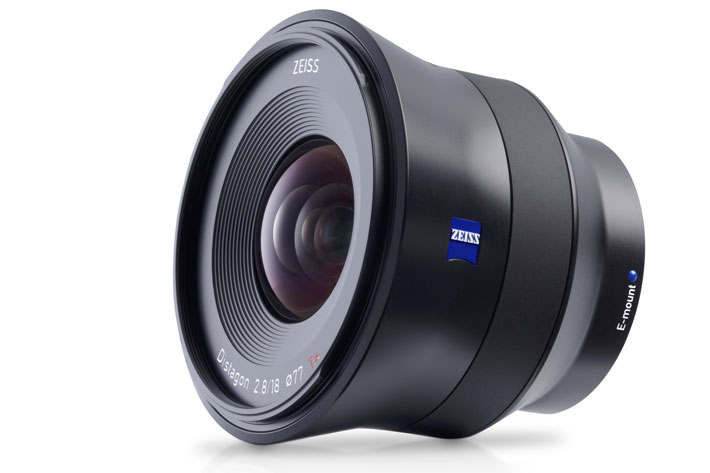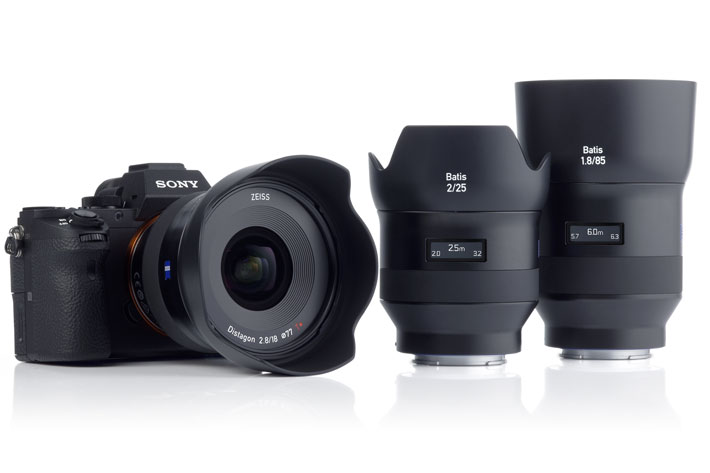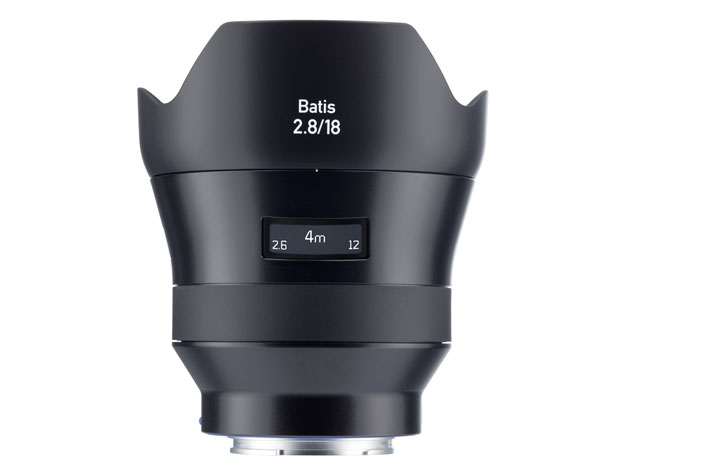
The new Zeiss Batis 18mm f/2.8, which Zeiss calls 2.8/18, expands the family of full-frame lenses for Sony cameras with E-mount, and offers a wider perspective of the world.
One could say that there is a new bird around, as the name Batis derives from a small bird found in the forests and scrub of Africa.The Batis birds are characterized by great speed, excellent reflexes and boast a plumage rich in contrasts. Zeiss believes the name applies, metaphorically speaking, to the Zeiss Batis lenses, whose fast autofocus enables photographers to capture stunning shots rich in contrasts.
“The Zeiss Batis 2.8/18 follows on from the highly successful first two focal lengths the Zeiss Batis 2/25 and the Zeiss Batis 1.8/85. In spite of the extremely wide angle, we have succeeded in adapting the image quality of the Zeiss Batis 2.8/18 perfectly to the two different lens types,” says Dr. Michael Pollmann, Product Manager of Zeiss Camera Lenses. “With the expansion of the Zeiss Batis range of lenses, we are offering creative and discerning photographers yet another professional tool,” says Pollmann. With the Zeiss Batis 2.8/18 customers can now enjoy the super wide-angle full-frame lens they’ve been waiting for.

The new Batis 2.8/18 is, according to Zeiss, impressive on account of its high image quality across the entire image field. “By virtue of the large diagonal angular field of 99 degrees, this lens is ideal for capturing unique images in landscape, architectural and astro photography and for impressive interior shots of small spaces,” continues Pollmann.
The super wide-angle camera lens has 11 lens elements in ten groups and draws on the Zeiss Distagon optical design. Four of the lens elements are aspheric on both sides and seven are made from special types of glass. The Floating Elements design permits constantly high image performance in the focal plane – from the minimum object distance to infinity.
The new Batis 2.8/18 also features an innovative OLED display to show focus distance and depth of field depending on the camera sensor used. “The electronic display is easy to read even in low light,” explains Pollmann. The fast, quiet AF drive with linear motors keeps the subject sharply in focus. In addition to the autofocus, a handy, rubberized focus ring supports precise manual focusing – meaning the photographer has full creative freedom when it comes to image composition. Zeiss Batis lenses are also equipped with dust and weather seals, allowing them to be used in even the harshest weather conditions. All Batis lenses support all the operating modes and functions of the current range of E-mount cameras.

If you’re interested in birds, Zeiss also has two other families of lenses for Sony E-mount cameras: the Touit, genus of Neotropical parrots in the Psittacidae family, and the Loxia, a small passerine bird in the finch family Fringillidae. The Milvus family, for DSLRs, takes its name from a genus of medium-sized birds of prey, while the Otus represents a popular family of birds: owls. Zeiss has, since 2013, used Latin names of birds for their lenses series.
Zeiss will be at NAB 2016 in Las Vegas, from April 18-21, with their range of lenses and the cinema lenses Compact Zoom CZ.2, Compact Prime CP.2.

